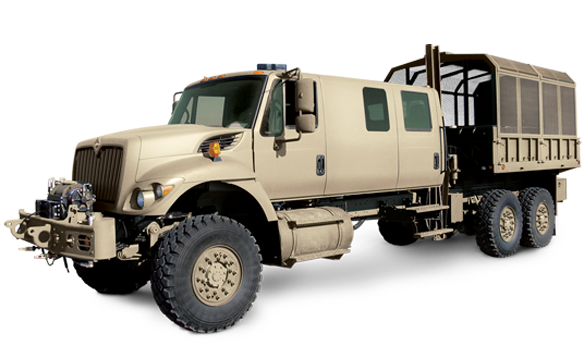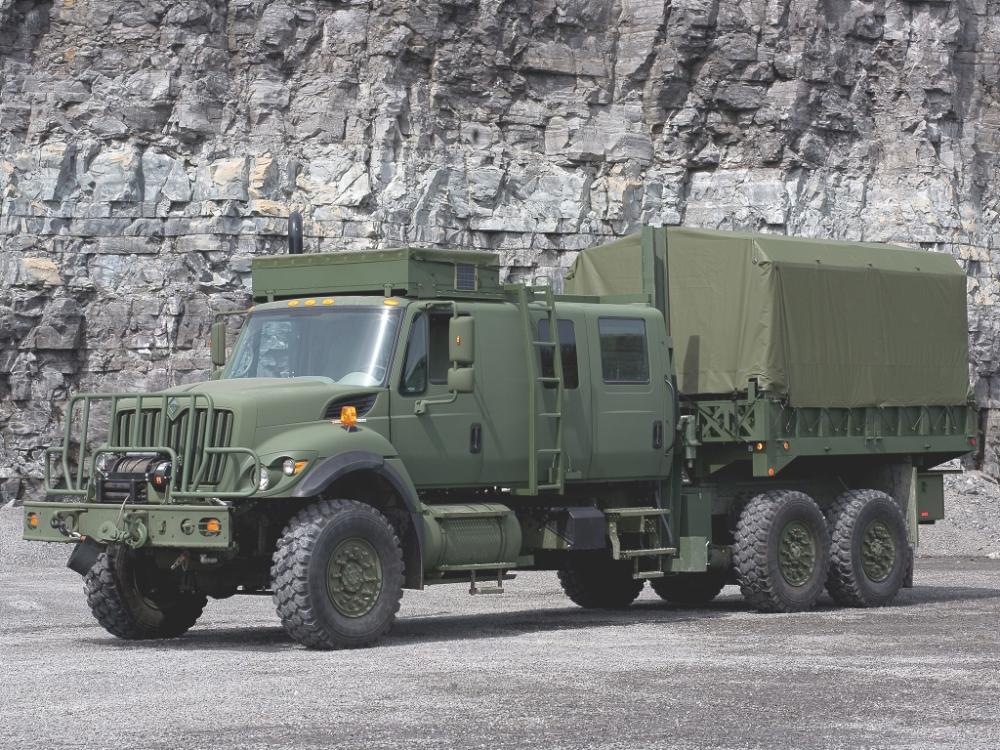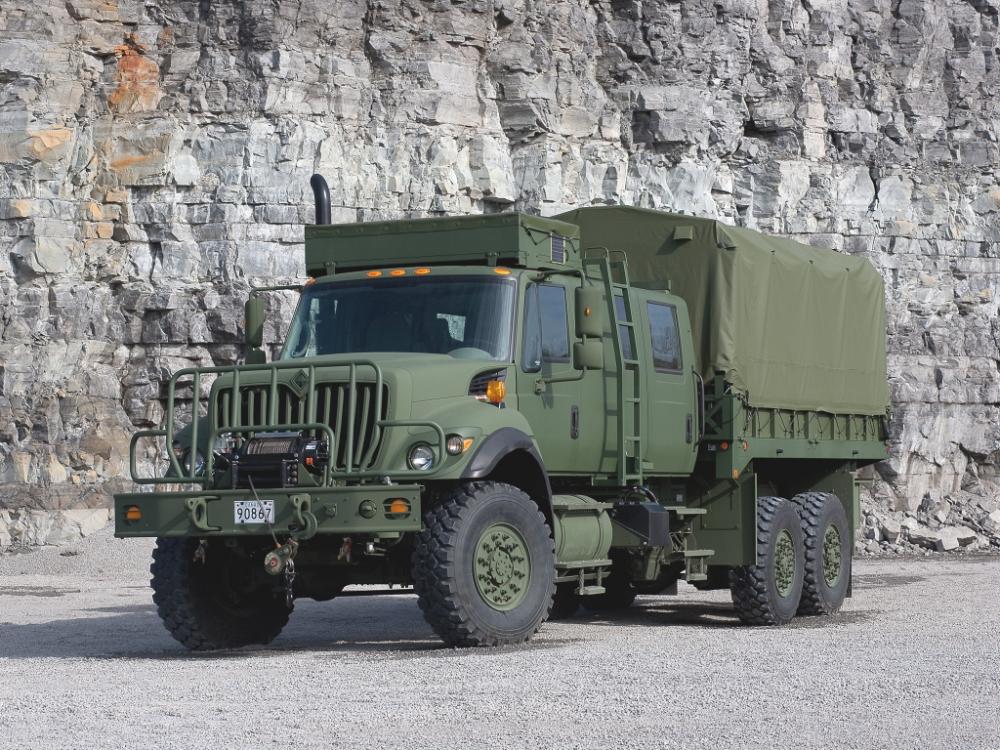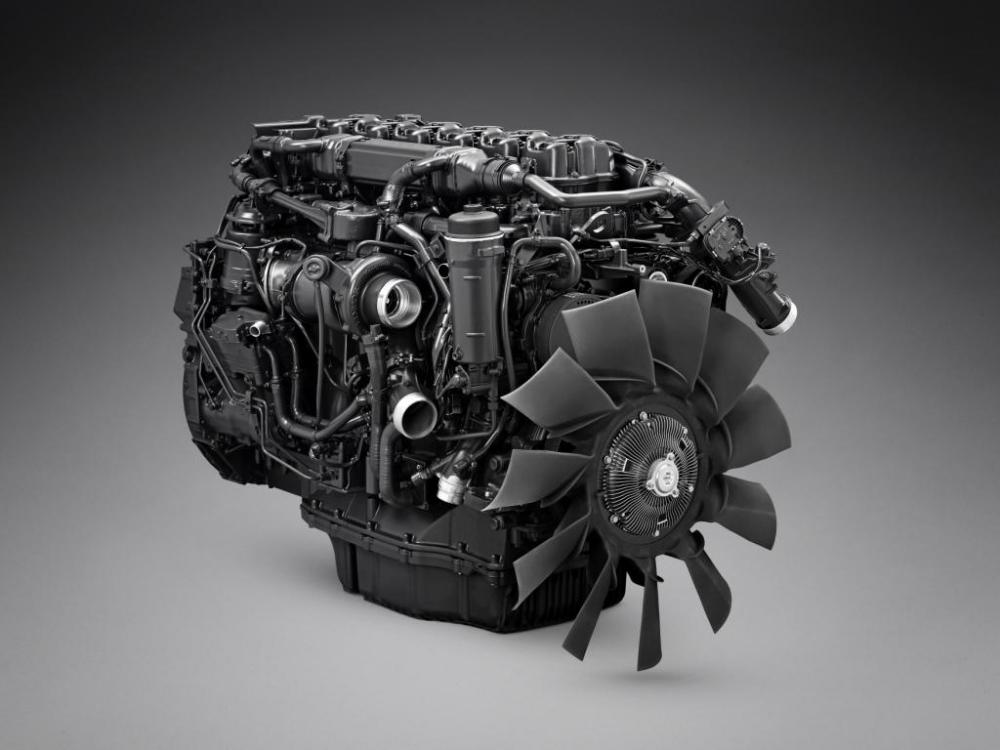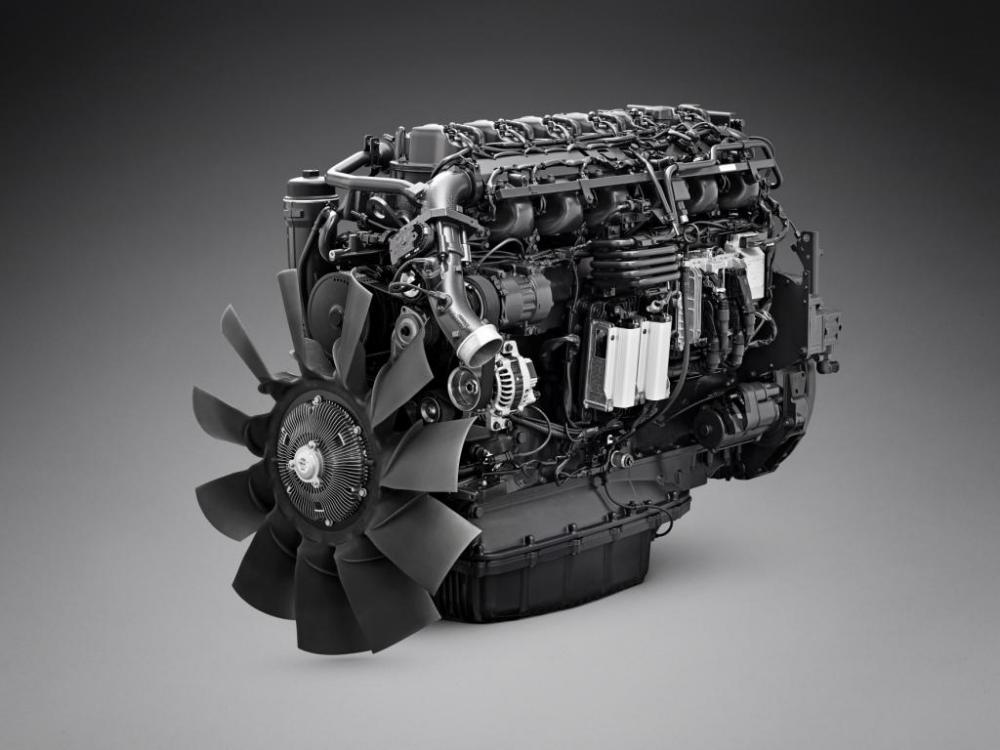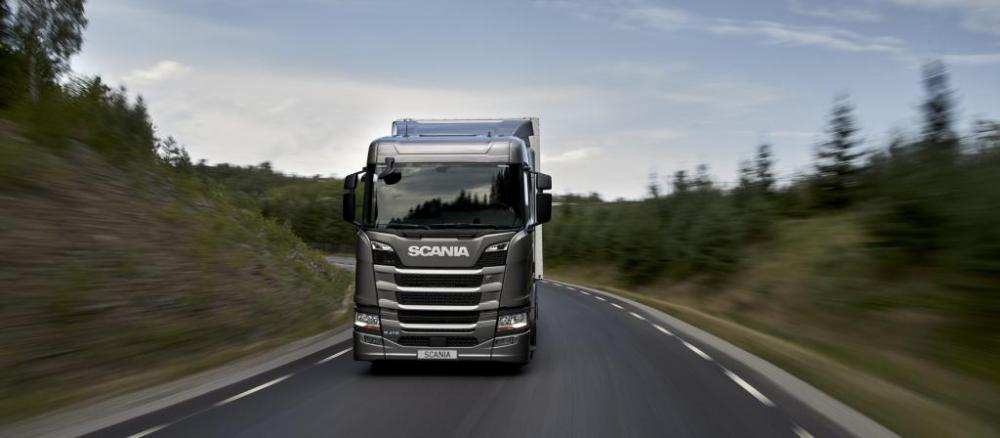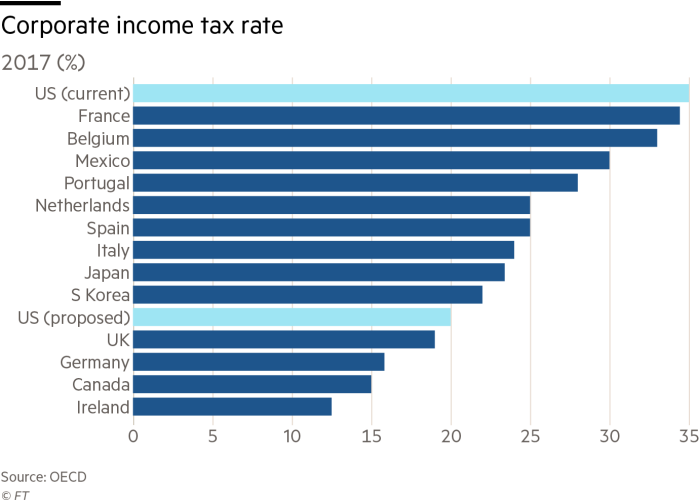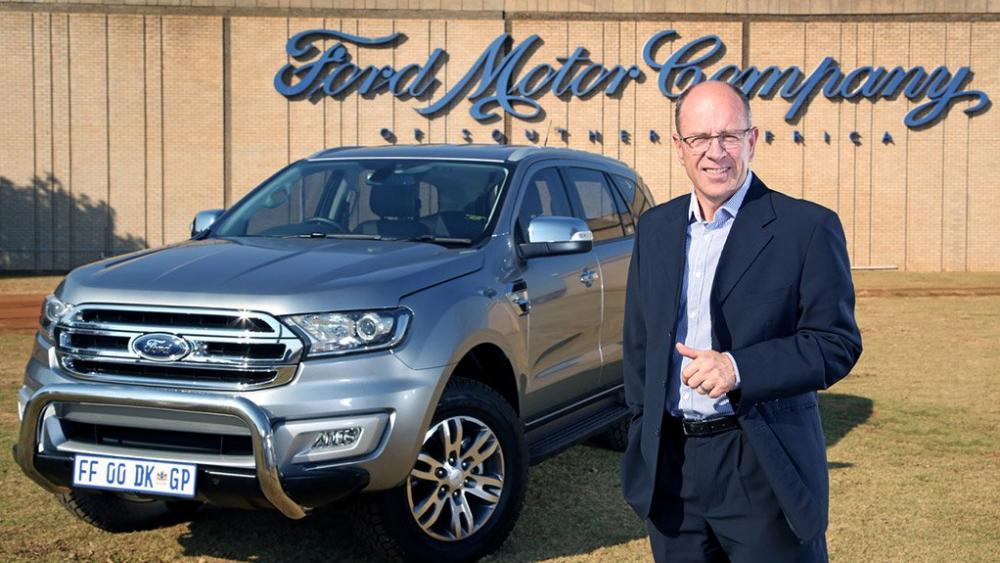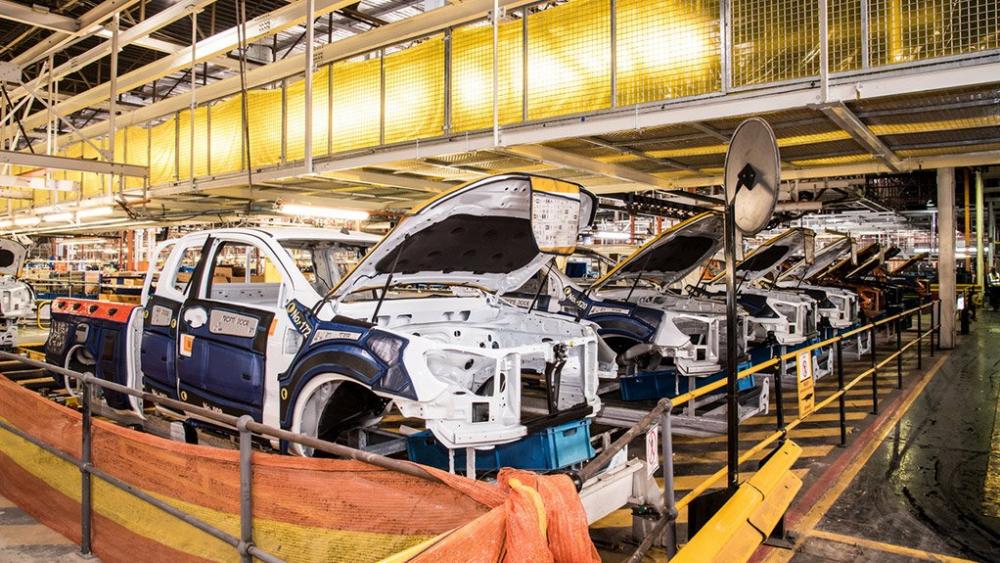
kscarbel2
Moderator-
Posts
17,893 -
Joined
-
Days Won
86
Content Type
Profiles
Forums
Gallery
Events
Blogs
BMT Wiki
Collections
Store
Everything posted by kscarbel2
-
What did I tell you Bob? Ford took the globally-proven and fire-free Transit and added the "Catch Fire" option for the North American market. From the UK to China, the Transit is trouble-free. But when they adapt it to the U.S. market, they gut it and create a nightmare.
-
Ford recalls 73,000 Transit vans, 30,000 F-150 pickups Trailer-Body Builders / November 7, 2017 Ford issued four safety recalls involving Transit vans, which potentially could catch fire, and F-150 trucks. Here are details of the recalls, which concern a towing module that could be corroded by water; two different transmission/ shifting problems; and a small number of improperly machined cylinder heads. Specifically, these affect 2015-2017 Transits and certain 2017 and 2018 F-150 pickups, with the Transit vans representing by far the largest number of vehicles being recalled. I. 2015-2017 Ford Transit vehicles equipped with trailer tow module Ford is recalling approximately 73,000 2015-2017 Ford Transit vans with trailer tow modules. Water can get into the module and connector, Ford said, potentially corroding wiring and damaging the module. In affected vehicles, water in the module may cause: Turn signals to flash rapidly; —Loss of the instrument cluster display; —Loss of heater and air conditioning controls; and —Loss of multimedia including radio, screens and SYNC. Wiring corrosion from prolonged water intrusion could also cause an electrical short to the ground, which could cause: —Faulty seat belt pretensioner deployment; —A burning smell; and/or —Increased risk of fire, including when the vehicle is parked and the ignition is off. Ford said it is not aware of any accidents or injuries associated with this issue, but knows of two reports of vehicle fires on Canadian fleet vehicles potentially related to this condition. The reference number for this recall is 17S34. Affected vehicles include 2015-17 Ford Transit vehicles built at Kansas City Assembly Plant from Feb. 3, 2014 to Aug. 2, 2017.The recall involves about 65,000 U.S. vehicles and some 8,000 in Canada. Ford provided further details of the recall repairs. Until the final repair is performed, customers should take the precaution of parking their vehicles outside. As an interim repair, until parts are available for the final repair, customers may have dealers disable the trailer module. For the final repair, dealers will add a drainage hole to the driver's door stepwell and incorporate a fuse into the vehicle wiring harness. All services and repairs will be performed at no cost. II. 2018 Ford F-150 vehicles with 3.3L engine, 6-speed automatic transmission and column-mounted shift lever Ford is recalling about 15,000 2018 Ford F-150 trucks with 3.3L engines, six-speed transmissions and column-mounted shift lever due to inaccurate gear selection that could result in unintended vehicle movement. In affected vehicles, moving the transmission shifter from park to drive rapidly may cause loss of the "PRNDL" gear indication in the instrument cluster and momentary engagement of reverse before the vehicle moves forward. Alternatively, an operator could get a momentary neutral gear selection rather than reverse. Unintended vehicle movement as a result of this may increase the risk of accident or injury. Ford said it is not aware of any accidents or injuries associated with this issue. The reference number for this recall is 17S35. Affected vehicles include: —2018 Ford F-150 vehicles built at Dearborn Assembly Plant from Jan. 12, 2017 to Oct. 9, 2017; and —2018 Ford F-150 vehicles built at Kansas City Assembly Plant, Jan. 30, 2017 to Oct. 9, 2017. The recall involves about 12,400 U.S. vehicles, 2,000 in Canada and about 575 in Mexico. As a fix, dealers will reprogram the powertrain control module with the latest level calibration software at no cost to the customer. Prior to the repair, customers and dealers should carefully shift into the desired gear and confirm intended gear selection in the "PRNDL" instrument cluster display. III. 2017 Ford F-150 vehicles with 10-speed automatic transmission Ford is recalling some 15,000 2017 Ford F-150s with 10-speed automatics for an inability to shift the transmission using the shift lever. In affected vehicles, the pin attaching the transmission shift linkage to the transmission may come out. If this happens, the driver moving the shift lever won't change the transmission gear; the transmission will stay in whatever gear it was in when the pin came out regardless of the position of the shift lever. The shifter indicator could display inaccurate information, and the key can be removed even if the vehicle is not in park. However, a warning chime will sound and a message will be displayed in the instrument cluster indicating "Transmission not in park." If the transmission is not in park or neutral, the driver would not be able to restart the vehicle. If a vehicle cannot be shifted to park and the parking brake isn't applied, the vehicle could move unintendedly and increase the risk of a crash. Ford said it is not aware of any accidents or injuries associated with this issue. Affected vehicles include: —2017 Ford F-150s built at Kansas City Assembly Plant from Sept. 16, 2016 to Aug. 9, 2017; and —2017 Ford F-150 vehicles built at Dearborn Assembly Plant from Aug. 23, 2016 to July 2, 2017. The recall involves about 11,800 U.S. vehicles, 3,200 in Canada and 700 in Mexico. The reference number for this recall is 17S36. To resolve the issue, dealers will remove the roll pin and replace it with an updated part at no cost. Prior to getting their vehicle repaired, customers and dealers will be instructed to make sure the parking brake is applied whenever the vehicle is parked. IV. 2018 Ford F-150s with 3.5L engine Ford is recalling about 30 2018 Ford F-150s with 3.5L engines for possible loss of power and engine failure. In affected vehicles, cylinder heads manufactured for the 3.5L engines are missing machined holes for supplying lubrication to the camshaft. Improper camshaft lubrication will result in premature engine failure and loss of power without warning while driving, increasing the risk of accident or injury. Ford said it not aware of any accidents or injuries associated with this issue. Ford also noted it not aware of any affected vehicles that have been delivered to customers. Affected vehicles include: —2018 Ford F-150 vehicles built at Dearborn Assembly Plant from Sept. 3-16, 2017; and —2018 Ford F-150 vehicles built at Kansas City Assembly Plant, Sept. 5-17, 2017. The recall involves some 22 U.S. vehicles, seven in Canada and one in Mexico. The reference number for this recall is 17S37. Ford is tracking down affected vehicles at dealerships. If an affected vehicle is in the possession of an owner, the company said it will arrange to transport the vehicle to a Ford or Lincoln dealer to have the engine replaced at no cost.
-
-
Scania’s latest gas engine designed for long-distance transport
kscarbel2 replied to kscarbel2's topic in Trucking News
-
Scania Group Press Release / November 8, 2017 Scania’s new gas engine is designed for long-distance transport and on construction sites. 410 horsepower and 2,000 Nm – well in line with diesel engines of a similar size. A service interval of 45,000 km ensures high availability. Scania’s launch of the OC13 gas engine marks the start of alternative fuel solutions for the new truck generation. The OC13 is based on Scania’s well-proven 13-litre engine. The engine works according to the Otto principle with spark plugs and complete combustion. There is a growing interest in operating vehicles on biogas or natural gas in countries such as Italy and France as a result of increased availability, improved infrastructure and good economic viability for hauliers. The sustainability aspects are also important – even natural gas provides a CO2reduction of approximately 15 percent. Underlying technology Scania’s gas engines are based on stoichiometric combustion, i.e. complete combustion of both fuel and oxygen. Similar to a petrol engine, the combustion is initiated by means of spark plugs. The pre-mixing of the fuel takes place upon entry into the cylinders. “Throughout development, our aim has been to ensure the best possible driveability,” explains Folke Fritzson, Senior Engineer at Scania R&D and part of the team developing Scania’s gas engines. “The performance and characteristics should correspond to that of a modern diesel engine.” The new 13-litre gas engine is always available with Scania Opticruise, Scania’s automated gearboxes. This means, of course, that gear changing and driving comfort are top-class for the driver, with fast, unhesitating gear selections. Carefully thought-out tanks The tank solutions are an important aspect of gas fuel operations. Both LNG tanks (for refrigerated, liquefied gas) and CNG tanks (for compressed gas) can be ordered directly from Scania. LNG always provides greater range, as a significantly larger amount of fuel is available. “In combustion, there is no difference between LNG and CNG, but there are significant differences in the operational range,” says Fritzson. “With LNG, it’s up to 1,100 kilometres for a typical semi-trailer on a flat road. CNG usually provides a range of up to 500 kilometres. The latter is more than sufficient for many customers, for example in regional transports with a return to the home base and refuelling every day. The mileage that can be achieved before refuelling is required also depends on the type of driving and usage, and how hilly the route is.” In order to improve safety, Scania’s engineers have turned the tank valves backwards, away from the direction of travel. This is a seemingly simple but important detail that reduces the risk of the valves becoming damaged if hit by stones or gravel. Longer maintenance intervals Gas engines that operate according to the Otto principle (with pre-mixing of fuel and spark plugs) have shorter service intervals than diesel engines. However, Scania has achieved a significantly longer service interval, with the lifespan of the spark plugs currently setting the limit. “We have defined the interval at 45,000 kilometres for both the spark-plug and oil changes with normal use,” says Fritzson. “This is a clear improvement over previous generation gas engines, with 30,000 kilometres as normal intervals. This reduces maintenance costs and increases availability.” “Everything indicates that we are heading towards a breakthrough for gas engines, including heavier trucks for long-distance transport and construction-site vehicles,” says Henrik Eng, Product Director Urban, Scania Trucks. “Everyone can now benefit from good driveability and driver comfort. We also see that the rapidly growing gas infrastructure in several European countries spurs interest in using this alternative fuel.” Scania is launching an alternative fuel initiative for the new generation of trucks, with the world premiere of a new 13-litre gas engine at the Ecomondo trade fair in Rimini, Italy. Gas engines are generally quieter than diesel engines, and are therefore well suited for urban environments. Scania’s new Euro 6 gas engine meets the requirements of the PIEK noise limitation standard, which stipulates a noise level of no more than 72 dB(A) in areas with stringent noise limits. Technical data OC13 101 Type Inline Cylinder capacity 12.7 litres Firing sequence 1-5-3-6-2-4 Cylinders 6 Valves per cylinder 4 Bore x stroke 130 x 160 mm Cam type Normal Compression 12.6:1 Fuel injection Bosch Emissions treatment Scania EGR and 3-way catalytic converter Oil volume 43 litres Max power 410 hp (302 kW) @ 1,900 rpm Max torque 2,000 Nm @ 1,100–1,400 rpm
-
Scania Group Press Release / November 8, 2017 Scania introduces the OC13, a six-cylinder gas engine with 410 hp. Good capacity for heavy, long-distance transports as a result of characteristics that are similar to a diesel engine of the same size; provides a range of up to 1,100 km together with LNG tanks. Scania launches a groundbreaking Euro 6 gas engine with a power output of 410 horsepower. The 13-litre engine can be used both for long-distance transport and construction-site movements. The performance is comparable to a diesel engine of the same size. The newly developed engine is the latest addition to Scania’s range of sustainable transport solutions, offering CO2 reductions of 15 to 90 percent “There is considerable interest in Europe for long-distance, gas-powered transport solutions,” says Henrik Eng, Product Director Urban, Scania Trucks. “The engine meets these needs with all the total operating economy benefits of gas and no disadvantages.” The new engine provides 410 horsepower and gives 2,000 Nm from 1,100 and up to 1,400 rpm. These figures compare well with diesel engines of a similar size. With LNG (liquid gas), a semi-trailer truck of up to 40 tonnes can drive 1,100 km without refuelling. With twin LNG tanks on rigid trucks, a range of up to 1,600 km is possible. “Until now, most gas engines have either been too weak or had an insufficient range to be really useful for heavy, long-distance transports. But Scania has solved these issues with this engine and can now offer reduced CO2levels as well as increased customer profitability,” says Johan Mühlbach, Product Manager Gas, Scania Trucks. .
-
Scania Group Press Release / November 8, 2017 Scania’s new 410 hp six-cylinder gas engine is a long-awaited engine for demanding and sustainable long-distance and regional transport operations. With biogas in the tanks, CO2 reduction can be as much as 90 percent compared to a similar diesel engine. Interest in running on gas is growing greatly, thanks to good access, a growing infrastructure and good operating economy. The sustainability aspects are also important. Until now, gas engines have either been too weak or had too small a range for serious long-distance transport. But Scania has solved these issues with a ground-breaking Euro 6 gas engine with full potential for heavy, long-distance transport and construction-site applications that is equivalent in all respects to a diesel engine of the same size. The foundations were laid by Scania’s well-known 13-litre engine, which has been successfully developed to run on gas. Great hopes “We have great hopes for this unique engine,” says Henrik Eng, Product Director, Urban, Scania Trucks. “There is a considerable and genuine interest among existing and prospective customers to be able to have, for example, long-distance transport solutions for heavy goods that run on gas, and this engine meets this demand in all respects. It’s powerful, it gives customers a lower operating cost, and it reduces emissions.” The new engine provides 410 hp and gives 2,000 Nm from 1,100 and through to 1,400 r/min – respectable figures that compare well with diesel engines of a similar size. With LNG (liquefied natural gas) in its tanks, a typical semi-trailer truck with a gross weight of up to 40 tonnes can drive 1,100 kilometres without refuelling under favourable conditions. With twin LNG tanks on a rigid truck, the range is approximately 1,600 kilometres. Best possible driveability “An important goal for us in the development work has been to ensure the best possible driveability, so that the performance and characteristics will correspond to what one expects from a modern diesel engine,” explains Folke Fritzson, a Senior Engineer who is part of the team developing Scania’s gas engines. The new 13-litre gas engine always runs in combination with Scania Opticruise, Scania’s automated gearboxes. This means that the driver has first-class gear changing and driving comfort, with fast, unhesitating gear selections. A new, more robust spark plug and modified software have resulted in extended intervals between spark plug changes. Wide range An important aspect of gas engines is the tank solutions on offer. Both tanks for compressed gas and tanks for refrigerated liquid gas can be ordered directly from Scania. LNG generally provides a greater range, as a significantly larger amount of fuel is carried. With LNG, the range is up to 1,100 kilometres for a typical semi-trailer on a flat road. But a CNG (compressed natural gas) solution, which usually provides a range of up to 500 kilometres, is also more than sufficient for many customers, for example if the assignments primarily involve regional operations with a return to the home base and refuelling point every day. But the mileage that can be achieved before needing to refuel also depends, of course, on the type of driving and usage. Longer maintenance intervals A special safety aspect is that Scania’s engineers have turned the tank valves backwards, away from the direction of travel. This is a seemingly simple but thoughtful detail that reduces the risk of the valves becoming damaged by being hit by stones or chippings. Gas engines that run using the Otto principle (with pre-mixing of fuel and with spark plugs) have shorter service intervals than diesel engines. However, Scania’s engineers have implemented a series of measures that help bring about a significantly longer service interval, and it is currently the life span of the spark plugs that sets the limits. “We have defined the interval as 45,000 kilometres for both spark plug replacement and oil changes with normal use,” Fritzson says. “This is a clear improvement over previous generations of gas engines, which had 30,000 kilometres as their normal interval. This reduces maintenance costs and increases uptime, since fewer workshop visits are required during a given ownership period.” A breakthrough “Everything indicates that we are making a breakthrough for gas engines, including those for heavier trucks for long-distance transport and construction-site vehicles,” Eng says. “Nobody now has to do without characteristics such as good driveability or driver comfort. At the same time, we are seeing that a rapidly growing infrastructure goes hand in hand with an increasing interest among potential customers to start using all the gas that is available in markets such as France, Italy and Switzerland, to mention just a few.” SILENT TECHNOLOGY Gas engines work according to the Otto principle, relying on spark ignition as opposed to the compression ignition used in diesel engines. A significant advantage of an Otto engine is the low noise level, much quieter than a diesel engine. In addition, thanks to the lower compression ratio and combustion pressure in the cylinder, the strain on engine components is considerably lower, making for a long service life. .
-
Just curious......how do you know the perpetrators are from Russia?
-
When a website has been hacked, it's best not to log in, much less visit the affected website.
-
It’s all too much…..we have entered the Twilight Zone
kscarbel2 replied to kscarbel2's topic in Odds and Ends
About 93 years ago, in the America of 1925, another time and place with different attitudes, respect and honor was extended to 49 soldiers who obeyed their government's call to cross the Atlantic and fight on foreign soil.......but never returned. How dare U.S. courts side with the beliefs of a peculiar few, much less the 2018 standards of the majority, and order the removal of a monument built in 1925. The monument stood, without issue, for 89 years. Then it's suddenly politically incorrect based on the views of an obscure group? Why don't we then erase all historical artifacts from existence, and be done with it? Cultural decay and declining standards of behavior in the United States. -
It’s all too much…..we have entered the Twilight Zone
kscarbel2 replied to kscarbel2's topic in Odds and Ends
It’s all too much…..we have entered the Twilight Zone ------------------------------------------------------------------------------------------------------------------------------ Federal court rules World War I memorial cross must be torn down Back in 1925, the American Legion erected a memorial in Bladensburg, Maryland, to honor the memory of 49 men who perished during World War I. The 40-foot tall memorial became known as the "Peace Cross." In 2014, the American Humanist Association -- a group that believes in "being good without a god" -- filed a lawsuit alleging the cross-shaped memorial is unconstitutional and demanding it be demolished, altered, or removed. They alleged the cross carries "an inherently religious message and creates the unmistakable appearance of honoring only Christian servicemen." On Wednesday, the Fourth Circuit Court of Appeals agreed and ruled the historic memorial must be torn down -- all because the Bladensburg Memorial is in the shape of a cross. The Fourth Circuit said the memorial excessively entangles the government in religion because the cross is the “core symbol of Christianity” and “breaches” the wall separating church and state. Writing separately, Chief Judge Gregory wrote, “This Memorial stands in witness to the VALOR, ENDURANCE, COURAGE, and DEVOTION of the forty-nine residents of Prince George’s County, Maryland ‘who lost their lives in the Great War for the liberty of the world.’ I cannot agree that a monument so conceived and dedicated and that bears such witness violates the letter or spirit of the very Constitution these heroes died to defend.” The American Legion could appeal directly to the Supreme Court. "Today's decision sets dangerous precedent by completely ignoring history, and it threatens removal and destruction of veterans memorials across America," First Liberty Institute attorney Hiram Sasser said. First Liberty Institute and the Jones Day law firm are representing the American Legion in their fight. “This memorial has stood in honor of local veterans for almost 100 years and is lawful under the First Amendment,” Jones Day attorney Michael Carvin said. “To remove it would be a tremendous dishonor to the local men who gave their lives during The Great War.” https://www.washingtonpost.com/local/public-safety/towering-cross-shaped-monument-on-public-land-is-unconstitutional-court-rules/2017/10/18/b26e4afe-5b47-11e7-9b7d-14576dc0f39d_story.html https://www.nytimes.com/2017/10/29/us/politics/peace-cross-maryland-court-first-amendment.html . -
US tax reform targets avoidance by multinationals The Financial Times / November 3, 2017 Excise levy would crack down on ‘inversion’ deals and foreign groups with US affiliates Foreign multinationals have emerged as the target of a tax avoidance crackdown embedded in radical reforms unveiled by Republicans this week as they seek to stop companies from spiriting profits out of the US. Company lobbyists who initially cheered the plan to cut the corporate tax rate from 35 per cent to 20 per cent were on Friday fretting over an anti-avoidance provision they said could do collateral damage to global supply chains. Their concerns underscore the formidable challenges confronting Republicans as they try to overhaul the tax code for the first time since 1986 in the face of corporate lobbying, budget constraints and an impatient President Donald Trump. Gary Cohn, director of Mr Trump’s National Economic Council, said on Friday the White House hoped to see the House of Representatives vote on the tax plan the week after next, when Mr Trump returns from a trip to Asia. The anti-avoidance proposal would hurt foreign-owned multinationals with American affiliates as well as US companies that used “inversion” deals to move their head offices overseas, said Bret Wells, a tax expert at the University of Houston. Crafted with an “America first” tinge, it would impose a 20 per cent “excise tax” on cross-border payments between affiliates of the same company, which are tax deductible and made for materials, services and intellectual property royalties. “Yes, we have a new design to stop inbound, unwarranted deductions of expenses,” said Kevin Brady, the chief Republican tax writer in the House of Representatives, in response to a question from the Financial Times. Mr Brady, chairman of the House ways and means committee, has been pushing for ways to end perceived advantages he says the current tax code gives to foreign companies versus US corporations. Mr Wells, who recommended similar measures to Congress at a hearing last month, said: “It’s a fairly expansive provision in the way it’s contemplated.” He estimated that at present some companies could use tax-deductible payments between affiliates to shift as much as 30-40 per cent of their profits out of the US. Lobbyists dispute the characterisation of multinationals as tax avoiders, arguing that such payments, also known as related-party transactions, are a legitimate and necessary part of internal supply chains that span the globe. Nancy McLernon, president of OFII, a trade group for foreign companies in the US, said: “We’ve got to be very careful as we craft major tax legislation that might disproportionately impact international companies because US companies can be hit by retaliatory measures as a response.” France is pushing for the EU to agree a new turnover tax on US tech groups to make it impossible for companies such as Apple and Google to cut their tax bills by moving profits between countries. The Republican excise tax would have a limited effect on US tech companies. Although they use IP royalties to shift profits out of the US, their ability to do so is constrained by a provision of existing law that does not apply to foreign-owned companies. One lobbyist said the excise tax would affect other US businesses, arguing it would hit carmakers importing components from their own factories in Mexico and retailers bringing in clothing from affiliates in China. He said it recalled an earlier Brady proposal for a levy on imports — a border adjustment tax — which was killed by an outcry from importers. “In my view this is a border tax-lite proposal because you are taxing material being brought in to be sold in the US,” the lobbyist said. The excise tax would raise $155bn over 10 years, according to Congress’s joint committee on taxation, curtailing what Republicans call the “erosion” of the US tax base and helping to pay for the sharp cut in the headline corporate tax rate. A summary of the excise tax proposal from Mr Brady’s committee says “current law incentivises and subsidises the shift of American jobs overseas because additional functions performed abroad allow for greater deductible payments from US corporations to their foreign affiliates”. It continues: “The provision would eliminate the US tax benefit afforded to multinational companies . . . by imposing full US tax on those profits irrespective of where they are booked.” Mr Brady said the excise tax was “one of the areas we invite the most feedback in, because it’s a combination of some traditional ideas that have been talked about in the past with some new approaches”. The Republican bill, which House speaker Paul Ryan says will also save money for middle class families, is due to be amended by lawmakers next week before a vote in the House. If it passes, it will then go to the Senate, where members are likely to want to make their own revisions. OFII and other trade groups said they were still evaluating the impact of the bill as a whole. Related reading - http://www.bigmacktrucks.com/index.php?/topic/42799-white-house-refuses-to-step-on-pfizer-tax-dodge/?hl=inversions .
-
Sorta OT: anybody have a ram 2500 with the air suspension?
kscarbel2 replied to willeo6709's topic in Other Truck Makes
I thought the second video, by an owner, largely covered your question. I apologize for failing you. Anyway, "you're welcome". -
Sorta OT: anybody have a ram 2500 with the air suspension?
kscarbel2 replied to willeo6709's topic in Other Truck Makes
My above post didn't answer your question? -
Sorta OT: anybody have a ram 2500 with the air suspension?
kscarbel2 replied to willeo6709's topic in Other Truck Makes
. . http://www.ramforum.com/f158/2500s_auto_level_rear_air_suspension_towing-78862/ -
Ford invests $220 million to expand Ranger production, build Raptor in South Africa Engineering News / November 3, 2017 Ford Motor Company of Southern Africa (FMCSA) is investing R3-billion (US$220 million) in expanding Ranger production at its Silverton plant, in Pretoria. The plant builds the Everest sports-utility vehicle and Ranger pickup, with the latter exported to 148 markets. The focus of the investment would be on increasing Ranger capacity in order to cater for growing demand from local and export markets, a further improvement in quality, increased automisation, as well as enabling production of the Ranger Raptor, which would enter the South African market in 2019, said Ford Middle East and Africa operations VP Ockert Berry in Pretoria on Friday. The purpose-built, desert-racing inspired Raptor forms part of the Ford performance brand, with other members of the club the well-known ST, RS and GT derivatives. Berry said the Silverton plant would produce more than 100 000 units this year. Current capacity at the plant is 100 000 units a year. The R3-billion investment will see capacity increase to 167 000 units a year. The changes to the plant should be in place in January next year, following a four-week shutdown period over December. The Silverton plant operates on a two-shift rotation, with a three-shift operation not currently on the table. Employment was set to increase through the capacity expansion, noted Berry, although he could not yet quantify the number of people to be added to the Silverton payroll. The newest investment from the US car maker in its South African operations was an indication of Ford’s commitment to South Africa, noted FMCSA MD Dr Casper Kruger. “The market response to our announcement that Ford will be introducing a Ranger Raptor has been absolutely phenomenal,” he added. “We are exceptionally proud to confirm that this highly anticipated performance model will be assembled in South Africa. This is yet another fantastic achievement for our local team, and signals our ability to produce world-class products of the highest calibre.” In the first ten months of the year FMCSA Ranger exports from South Africa reached more than 46 000 units, with local sales at 27 048 units. Ranger production at the Silverton plant started in 2011. .
-
-
With 330 horsepower and 725 lb/ft of torque, and a rear axle ratio chosen to achieve "12" startability, I imagine top speed easily reaching 65mph, and that's fast enough. Remember, it runs up to 2,800 rpm.
-
The media is a curious beast. Once, Zika was all over the front pages and set to conquer the world, and then suddenly you never hear any more about it. Perhaps, the powers that be couldn't stop it and thus want the topic buried.
BigMackTrucks.com
BigMackTrucks.com is a support forum for antique, classic and modern Mack Trucks! The forum is owned and maintained by Watt's Truck Center, Inc. an independent, full service Mack dealer. The forums are not affiliated with Mack Trucks, Inc.
Our Vendors and Advertisers
Thank you for your support!




